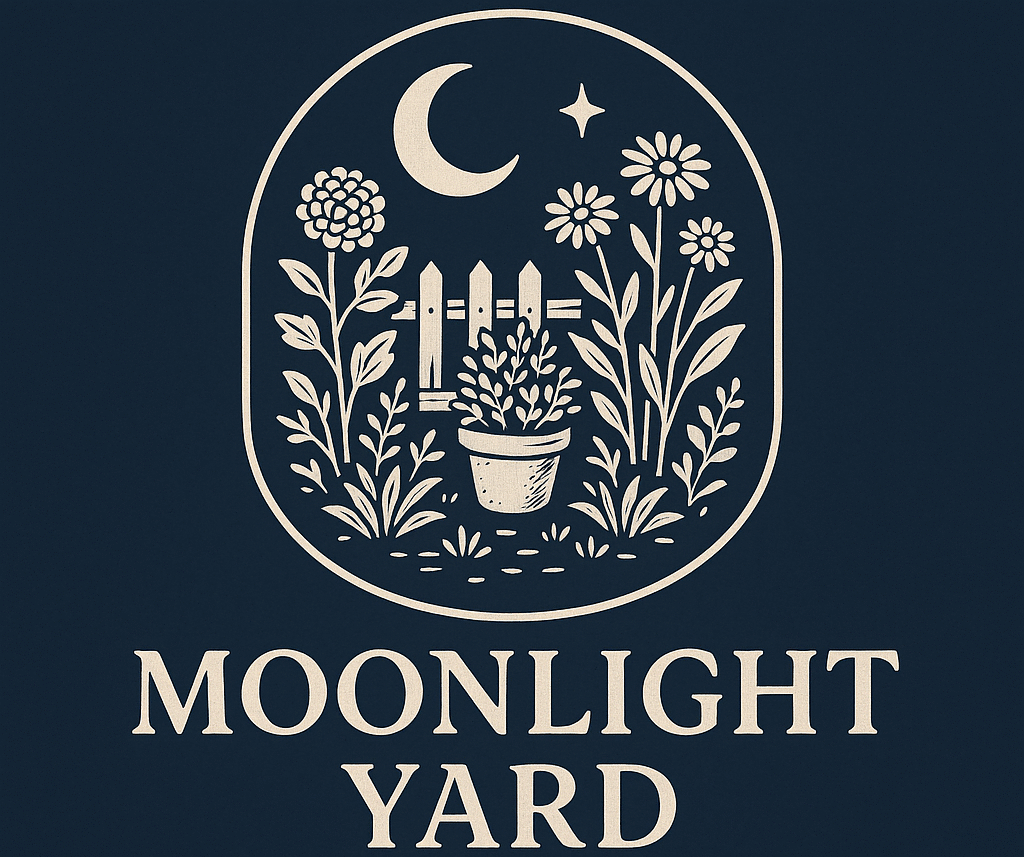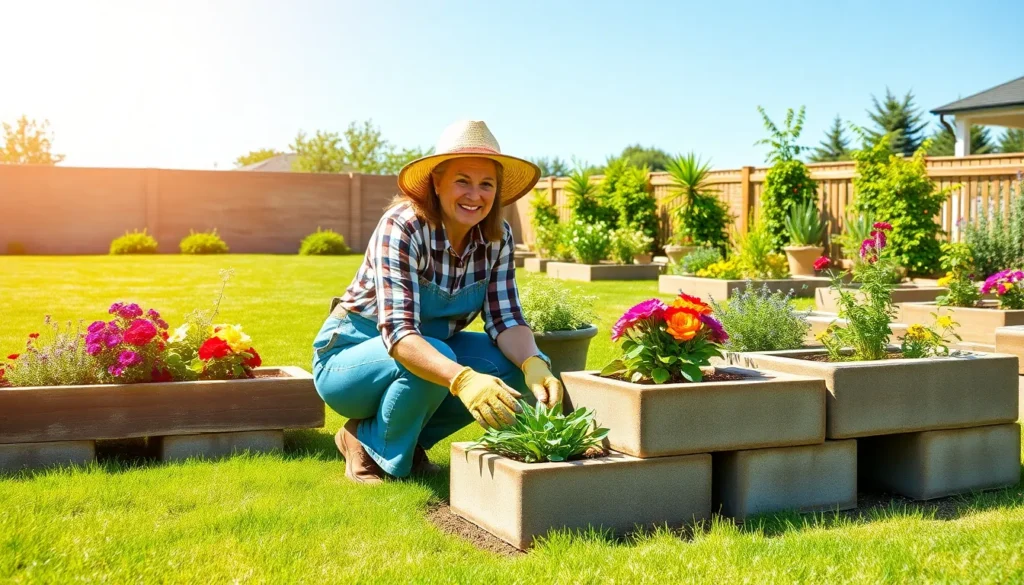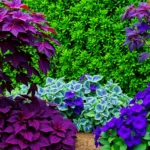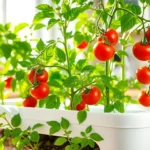We’ve all walked past those humble cinder blocks at the hardware store without giving them a second thought. But what if we told you these affordable concrete blocks could transform your outdoor space into a stunning garden oasis? Cinder block gardening has become one of the hottest trends among DIY enthusiasts and seasoned gardeners alike.
These versatile building blocks aren’t just for construction projects anymore. We’re talking about creating raised garden beds that’ll make your neighbors green with envy, building elegant planters that cost a fraction of store-bought alternatives, and designing functional garden walls that serve multiple purposes. The best part? You don’t need advanced construction skills or a massive budget to get started.
Whether you’re working with a tiny balcony or a sprawling backyard, cinder blocks offer endless possibilities for creative gardening answers. From vertical herb gardens to geometric flower displays, we’ll show you how to turn these simple blocks into garden gold.
Raised Garden Bed Ideas Using Cinder Blocks
Cinder blocks transform any outdoor space into a productive garden sanctuary. We’ll explore three popular configurations that maximize your growing potential while maintaining structural integrity.
Traditional Rectangular Raised Beds
Basic single-layer beds create the perfect foundation for beginner gardeners. Stack cinder blocks in a simple rectangle pattern measuring 4×8 feet or 3×6 feet to accommodate standard garden dimensions. Fill the hollow cores with gravel for drainage before adding quality potting soil to the main bed area.
Double-stacked configurations provide deeper root zones for vegetables like tomatoes, peppers, and root crops. Layer two rows of cinder blocks to achieve 16-inch height, ensuring adequate soil depth for most garden plants. Secure the second layer by offsetting joints like traditional masonry work.
Modular expansion systems allow us to add sections as our gardening needs grow. Connect multiple rectangular beds using shared walls to create garden zones dedicated to herbs, vegetables, or flowers. Each section maintains its own soil composition and watering schedule.
Multi-Level Terraced Gardens
Stepped terracing designs work exceptionally well on sloped terrain or when creating visual interest in flat yards. Build ascending levels using progressively smaller rectangles, with each tier approximately 8 inches higher than the previous level. Plant cascading varieties like cherry tomatoes or trailing herbs in upper tiers.
Pyramid-style arrangements maximize growing space in compact areas while creating stunning focal points. Start with a large base rectangle of 6×6 feet, then stack smaller squares of 4×4 feet and 2×2 feet on top. Each level accommodates different plant types based on sun exposure and accessibility.
Cascading water integration transforms terraced gardens into functional water features. Install simple drip irrigation between levels, allowing excess water to flow naturally from upper tiers to lower plantings. This system creates efficient watering while adding soothing sound elements.
Corner Garden Configurations
L-shaped corner beds use often-overlooked corner spaces in yards, patios, or against building walls. Design arms of equal or varying lengths depending on available space and sun patterns. One arm can house tall plants like sunflowers while the shorter section accommodates low-growing herbs.
Curved corner transitions soften harsh geometric lines by creating gentle curves using angled cinder block placement. Cut blocks at 45-degree angles or use specialty curved blocks to achieve smooth transitions. These designs work particularly well in contemporary industry settings.
Vertical corner towers maximize growing space by building upward in corner locations. Stack blocks in decreasing sizes to create tower gardens reaching 3-4 feet high. Plant strawberries, lettuce, or compact herbs in the block openings while using the central space for larger plants.
Vertical Cinder Block Garden Structures
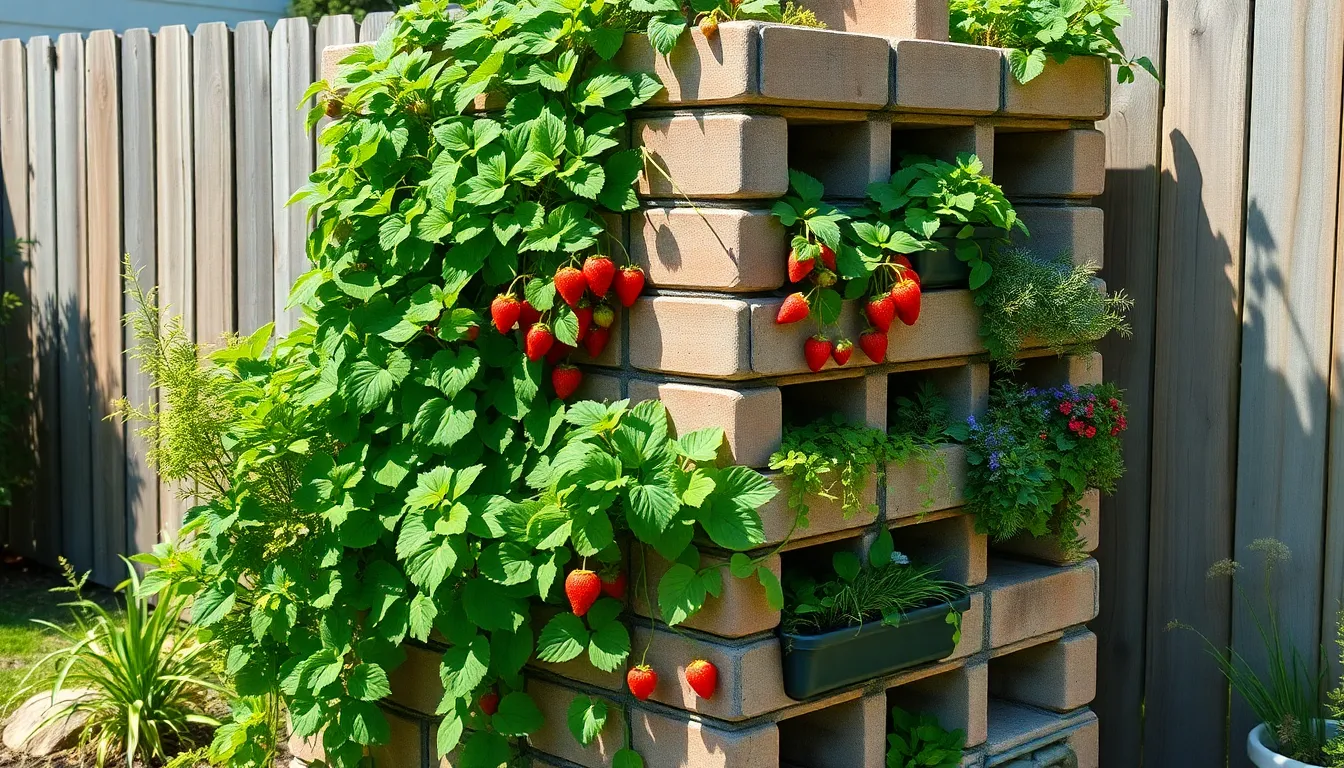
We’re expanding beyond traditional horizontal gardens to maximize growing space through vertical cinder block configurations. These upward growing answers transform limited square footage into productive garden areas while creating stunning architectural features.
Living Wall Planters
Living walls stack cinder blocks against existing fences or walls to create cascading green displays. Stack blocks with their openings facing outward to form planting pockets that hold soil directly. Fill each cavity with potting mix and plant ivy, strawberries, or trailing herbs that naturally cascade downward. Position blocks at slight angles to prevent soil spillage while maintaining proper drainage.
Freestanding living walls provide privacy screens while maximizing planting space. Build double thick walls by placing blocks back to back, creating deeper planting cavities for larger root systems. Stagger the blocks to create visual interest and allow plants to weave naturally between openings. These structures work particularly well for creating garden rooms or hiding unsightly areas like utility meters.
Cascade plantings transform vertical surfaces into lush green tapestries. Choose plants with different textures and growth habits to create layered visual effects. Combine upright herbs like rosemary in top cavities with trailing varieties like thyme in lower sections. This creates natural water flow from upper plantings to lower ones, improving irrigation efficiency.
Stacked Tower Gardens
Tower gardens use vertical stacking to create compact growing systems for herbs and vegetables. Stack four to six blocks in alternating orientations to create stable towers with multiple planting levels. Each rotation provides new planting angles while maintaining structural integrity. Fill cavities with quality potting soil and plant compact varieties like lettuce, herbs, or cherry tomatoes.
Spiral towers maximize planting surface area within minimal ground space. Arrange blocks in gradually decreasing circles as you build upward, creating natural planting terraces. This design allows gravity fed watering from top to bottom while providing each plant adequate growing space. Perfect for balconies or small patio areas where ground space is premium.
Multi tower clusters create productive garden zones with visual impact. Group three or four towers of varying heights to create ever-changing garden focal points. Plant different crop families in each tower to practice companion planting principles. Tall towers work well for vine crops with support structures, while shorter ones accommodate root vegetables and leafy greens.
Trellis Support Systems
Cinder block trellis bases provide sturdy anchor points for climbing plant support structures. Place blocks as corner foundations and insert metal or wooden posts into the cavities for permanent trellis installation. Fill cavities with concrete to secure posts against wind and plant weight. This system supports heavy vine crops like grapes, beans, or cucumbers effectively.
Integrated trellis walls combine planting space with vertical growing support. Build walls with alternating solid and open blocks to create both planting cavities and trellis mounting points. Attach wire mesh or wooden slats between mounted posts for climbing plant guidance. Plant climbing roses, clematis, or edible vines at the base while using wall cavities for companion herbs.
Modular trellis systems adapt to changing garden needs throughout growing seasons. Design removable trellis panels that fit between cinder block posts for seasonal flexibility. Store panels during winter months and reinstall for spring planting. This approach allows crop rotation while maintaining permanent structural elements for long term garden planning.
Herb Garden Designs With Cinder Blocks

Herb gardens benefit tremendously from the drainage and organization that cinder blocks provide. We’ll explore specialized herb garden configurations that bring culinary plants closer to your kitchen while maximizing growing efficiency.
Kitchen Window Herb Spirals
Spiral herb configurations create stunning focal points while keeping cooking herbs within arm’s reach of your kitchen window. Stack cinder blocks in a spiral pattern starting with a small circle and gradually expanding outward to form ascending levels. Fill each hole with potting soil and plant different herbs like parsley, sage, and dill around the spiral structure.
Compact spiral designs work perfectly for small spaces near kitchen windows where you need quick access to fresh herbs. Position taller herbs like rosemary at the center of the spiral and surround them with shorter varieties such as basil, thyme, and oregano. This arrangement creates natural shade gradients that benefit different herb varieties while maintaining an attractive visual flow.
Accessibility features make spiral herb gardens particularly practical for daily cooking needs. Build the spiral with multiple entry points so you can harvest herbs from various angles without stepping on planted areas. Consider adding stepping stones between spiral sections to prevent soil compaction while maintaining easy access to all your culinary herbs.
Dedicated Herb Corner Layouts
U-shaped corner arrangements maximize growing space while creating defined herb garden zones in underutilized corner areas. Arrange cinder blocks to form a U-shaped layout that opens toward your kitchen or main gathering area for convenient herb harvesting. Fill the center space with a taller focal herb like rosemary while surrounding it with smaller varieties that benefit from partial shade.
Corner layout benefits include improved air circulation and natural protection from strong winds that can damage delicate herb foliage. Stack blocks to create different height levels within the corner design, allowing sun-loving herbs like Mediterranean varieties to occupy higher positions while shade-tolerant herbs thrive in lower sections. This vertical arrangement also creates visual interest and makes maintenance tasks more comfortable.
Center focal points anchor your corner herb garden design while providing practical growing advantages. Use the central space for perennial herbs that return each season, such as sage, rosemary, or lavender, while filling surrounding block holes with annual herbs you’ll replant regularly. This strategy reduces yearly maintenance while ensuring your corner garden maintains its structure and visual appeal throughout different growing seasons.
Portable Herb Garden Boxes
Modular herb systems offer incredible flexibility for renters or gardeners who frequently rearrange their outdoor spaces. Construct small, portable herb gardens using individual cinder blocks filled with potting soil and planted with various herbs. These moveable units can be rearranged seasonally to follow optimal sun patterns or relocated when you move to a new home.
Seasonal mobility allows you to protect tender herbs during harsh weather by moving portable boxes to sheltered locations. Group portable herb boxes together during peak growing season to create impressive displays, then separate them for winter storage or indoor growing under lights. This flexibility proves especially valuable in regions with unpredictable weather patterns or extreme seasonal changes.
Container advantages make portable cinder block herb boxes ideal for apartment balconies, rental properties, or temporary garden installations. Fill each block hole with appropriate potting mix for exact herb requirements, allowing you to customize growing conditions for Mediterranean herbs versus moisture-loving varieties. Label each portable box to track herb varieties and planting dates, making garden management simpler and more organized.
Flower Bed Border Ideas Using Cinder Blocks

Transform your garden’s appearance with strategic cinder block borders that define planting areas while adding structural appeal. These versatile building materials create clean lines and organized growing spaces that enhance any industry design.
Curved Pathway Borders
Creating curved borders with cinder blocks adds organic flow to garden pathways and softens harsh geometric lines. We recommend arranging blocks in gentle curves that follow natural sight lines through your outdoor space.
Positioning blocks along curved pathways creates visual appeal that draws visitors deeper into garden areas. The hollow centers of each block provide convenient planting pockets for colorful annuals like marigolds or petunias. Small spaces benefit significantly from curved designs that make compact areas appear larger and more welcoming.
Stacking blocks in curved formations allows for varied heights that create ever-changing visual interest. We’ve found that alternating single and double block heights along curves produces the most striking effect while maintaining structural stability.
Geometric Pattern Designs
Grid patterns using cinder blocks deliver modern structure that complements contemporary garden styles perfectly. Arranging blocks in precise geometric formations creates organized planting zones that showcase specimen plants or colorful flower displays.
Modern gardens benefit from grid arrangements that establish clear boundaries between different plant varieties. We position blocks to form perfect squares or rectangles that frame individual plantings like roses or ornamental grasses. These structured designs work exceptionally well with minimalist landscaping approaches.
Mosaic patterns emerge when we arrange cinder blocks in different orientations and spacing configurations. Creating visual interest through varied block positioning adds artistic flair without requiring advanced construction skills. The hollow spaces become natural planters for herbs like thyme or oregano that thrive in contained growing environments.
Mixed Height Border Walls
Tiered wall designs using stacked cinder blocks create dramatic elevation changes that solve slope challenges while adding vertical growing space. We build these mixed height walls by varying block stacking patterns to accommodate different soil levels and drainage requirements.
Raised bed configurations benefit from mixed height approaches that improve soil drainage and provide better access to plants. Building walls with alternating heights creates natural terracing that prevents soil erosion on sloped properties. The varied elevations accommodate different plant root depths while creating visually appealing industry features.
Multilevel plantings thrive in mixed height border walls that offer diverse growing conditions within the same garden area. We’ve discovered that combining single stack sections with double or triple stack areas creates microclimates perfect for different plant varieties. These configurations maximize growing potential while adding architectural dimension to outdoor spaces.
Vegetable Garden Layouts With Cinder Blocks
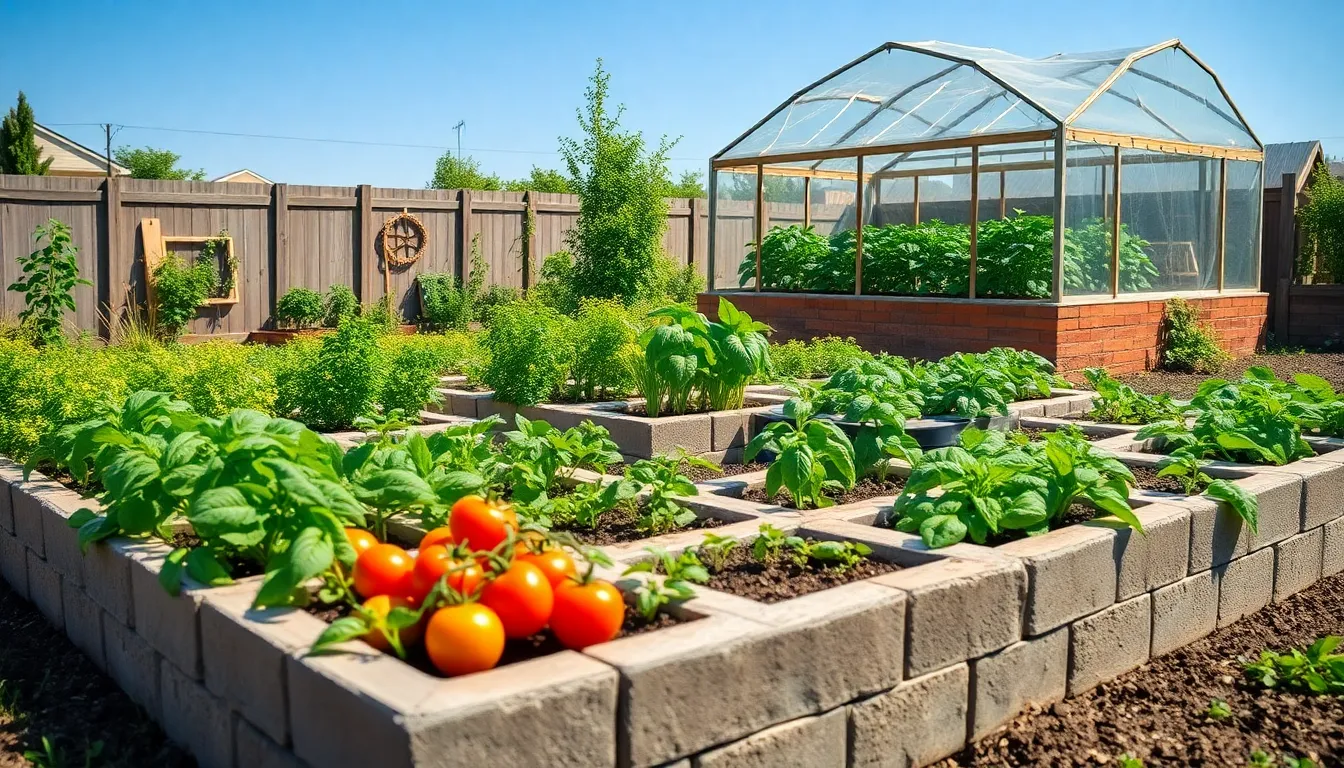
Vegetable gardening reaches new heights of organization and productivity when we incorporate cinder blocks into strategic layout designs. These versatile building materials transform ordinary growing spaces into highly efficient systems that maximize yields while simplifying maintenance tasks.
Square Foot Garden Grids
Square foot garden grids revolutionize how we approach vegetable cultivation by dividing raised beds into organized sections using cinder blocks as natural dividers. Creating these grids allows us to maximize space utilization while maintaining clear boundaries between different crop varieties. Each square section typically measures 12 inches by 12 inches, providing optimal growing conditions for exact plants like lettuce, radishes, or herbs.
Positioning cinder blocks as grid separators ensures we can easily access each planting area without stepping on surrounding soil. Drainage improves significantly when we use this method, as the hollow spaces in blocks allow excess water to flow freely between sections. Planning becomes simplified when we dedicate each square to a exact vegetable, enabling precise seed spacing and harvest timing.
Maintenance tasks become more manageable with grid systems, as we can focus on individual sections without disturbing neighboring plants. Rotating crops becomes effortless when we follow seasonal planting schedules within each designated square area.
Companion Planting Sections
Companion planting sections use cinder blocks to create separate growing zones that group beneficial plants together for enhanced growth and natural pest deterrence. Designing these sections allows us to strategically place vegetables that support each other’s development while keeping incompatible plants appropriately separated.
Benefits multiply when we pair tomatoes with basil in one section, as the aromatic herbs naturally repel insects that commonly attack tomato plants. Creating barriers with cinder blocks ensures that aggressive spreaders like mint don’t overwhelm neighboring vegetables. Each section can accommodate exact soil amendments customized to the plants’ nutritional requirements.
Organizing companion groups becomes systematic when we dedicate individual sections to proven combinations like the “Three Sisters” planting of corn, beans, and squash. Pest management improves naturally as we concentrate plants that provide mutual protection against common garden threats.
Season Extension Cold Frames
Season extension cold frames constructed with cinder blocks provide sturdy foundations for protecting vegetables from frost while extending growing seasons well into winter months. Stacking cinder blocks creates the frame’s base structure, offering excellent thermal mass that helps regulate soil temperatures during temperature fluctuations.
Covering these frames with transparent materials like glass or plastic creates miniature greenhouse environments that protect tender plants from harsh weather conditions. Building these structures allows us to continue harvesting fresh vegetables when outdoor temperatures would normally end the growing season.
Installing cold frames extends our gardening calendar by several weeks in both spring and fall, providing opportunities to grow cool weather crops like lettuce, spinach, and kale throughout most of the year. Positioning these frames in south facing locations maximizes solar heat absorption during shorter winter days.
Decorative Cinder Block Garden Features

Now that we’ve covered the foundational structures and planting systems, let’s explore how decorative elements can transform basic cinder block installations into stunning garden focal points.
Painted Block Color Schemes
Vibrant colors breathe life into standard gray cinder blocks, creating eye-catching garden accents that complement any industry design. We recommend using high-quality exterior paint specifically formulated for concrete surfaces to ensure long-lasting coverage that withstands weather conditions. Bright blues and greens work exceptionally well for herb gardens, while warm terracotta and orange tones enhance vegetable bed borders.
Ombre effects create sophisticated transitions by gradually blending colors from light to dark across multiple blocks. We’ve found that painting alternate blocks in complementary colors produces striking checkerboard patterns that add visual interest without overwhelming the natural plant elements. Neutral color palettes including soft grays, whites, and beiges provide timeless elegance that works with both modern and traditional garden styles.
Stenciling geometric patterns or botanical motifs onto painted blocks creates unique artistic elements that serve as conversation starters. We suggest using contrasting colors for stencil work to ensure clear definition and maximum visual impact.
Integrated Seating Areas
Functional seating transforms cinder block structures from simple garden beds into comfortable outdoor living spaces where we can enjoy our gardening achievements. Stacking blocks to create bench foundations requires minimal construction skills while providing sturdy support for wooden plank tops. We typically use 2×10 inch cedar or pressure-treated lumber for seating surfaces that resist weather damage.
Built-in planters within bench designs maximize space efficiency by incorporating growing areas directly into seating structures. The hollow cores of perimeter blocks create perfect spots for trailing plants like ivy or colorful annuals that soften hard edges. We’ve discovered that positioning benches along garden pathways creates natural rest stops while maintaining easy access to planting areas.
Corner seating configurations use often-overlooked spaces effectively, forming cozy nooks perfect for morning coffee or evening garden reflection. Adding cushions and throw pillows instantly enhances comfort levels, though we recommend choosing weather-resistant fabrics or storing soft furnishings when not in use.
Water Feature Combinations
Water elements paired with cinder block structures create tranquil garden sanctuaries that attract beneficial wildlife while adding soothing sounds to outdoor spaces. We’ve successfully incorporated small fountains by running electrical conduit through block cavities, creating clean installations without visible wiring. Surrounding raised beds with shallow water channels enhances the industrial-meets-nature aesthetic while providing irrigation benefits during dry periods.
Pond integration works beautifully when cinder blocks form retaining walls around water features, creating multi-level displays that add depth and dimension. We recommend sealing block surfaces that contact water using appropriate masonry sealers to prevent deterioration and maintain structural integrity over time.
Drip irrigation systems thread easily through block hollows, delivering consistent moisture to plants while creating gentle water sounds that enhance garden ambiance. Connecting multiple water features through underground tubing allows us to create comprehensive irrigation networks that serve both practical and decorative purposes throughout larger garden installations.
Small Space Cinder Block Garden Solutions
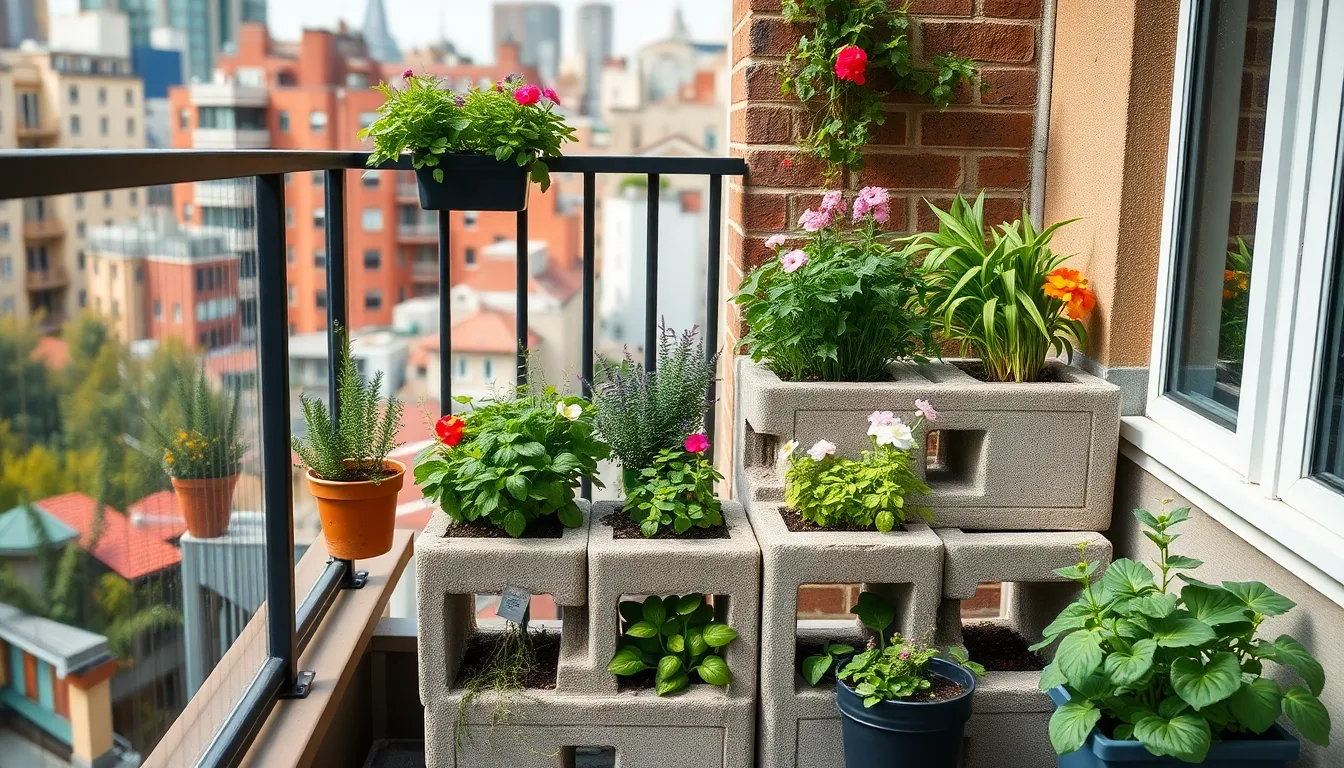
Limited outdoor areas don’t have to restrict your gardening ambitions. Creative cinder block configurations transform even the smallest spaces into productive growing environments.
Balcony Container Gardens
Stacked planter arrangements maximize vertical space on narrow balconies by utilizing the natural holes in cinder blocks as individual growing containers. We recommend painting these blocks to complement your balcony decor while adding rustic charm to compact areas.
Weight distribution systems ensure balcony safety by spreading plant loads across multiple support points rather than concentrating weight in single locations. Lightweight potting mix reduces overall stress on balcony structures while maintaining healthy growing conditions for herbs and small vegetables.
Mobile block configurations provide flexibility for renters who need portable gardening answers that move easily between locations. These setups require no permanent installation and adapt to changing sunlight patterns throughout different seasons.
Patio Corner Installations
L shaped corner planters transform unused patio corners into productive growing spaces by creating continuous planting beds that follow existing architectural lines. These configurations often use 8 to 12 cinder blocks arranged in perpendicular patterns that maximize corner square footage.
Integrated seating planters combine functionality by incorporating wooden planks across stacked cinder blocks to create bench seating while maintaining growing space below. We’ve found that 16 inch wide planks provide comfortable seating while allowing adequate root space for shallow rooted plants.
Tiered corner displays create visual interest through varying heights that showcase plants at different levels while improving drainage for each growing zone. These installations typically feature 2 to 4 different height levels using single and double stacked block configurations.
Apartment Rooftop Gardens
Privacy wall planters serve dual purposes by creating visual barriers while providing vertical growing space through strategically placed gaps that accommodate various pot sizes. These freestanding structures typically measure 4 to 6 feet in height and enhance rooftop privacy without requiring permanent construction.
Wind resistant configurations address rooftop challenges by creating low profile growing systems that withstand high wind conditions common in elevated locations. We recommend keeping planting heights below 3 feet to prevent wind damage while maintaining productive growing capacity.
Fire pit garden combinations integrate cinder block fire features with surrounding planted areas to create cozy gathering spaces that extend rooftop usability into cooler months. These installations position heat loving plants near fire pit locations while maintaining safe clearances of at least 3 feet from open flames.
Drainage and Soil Tips for Cinder Block Gardens
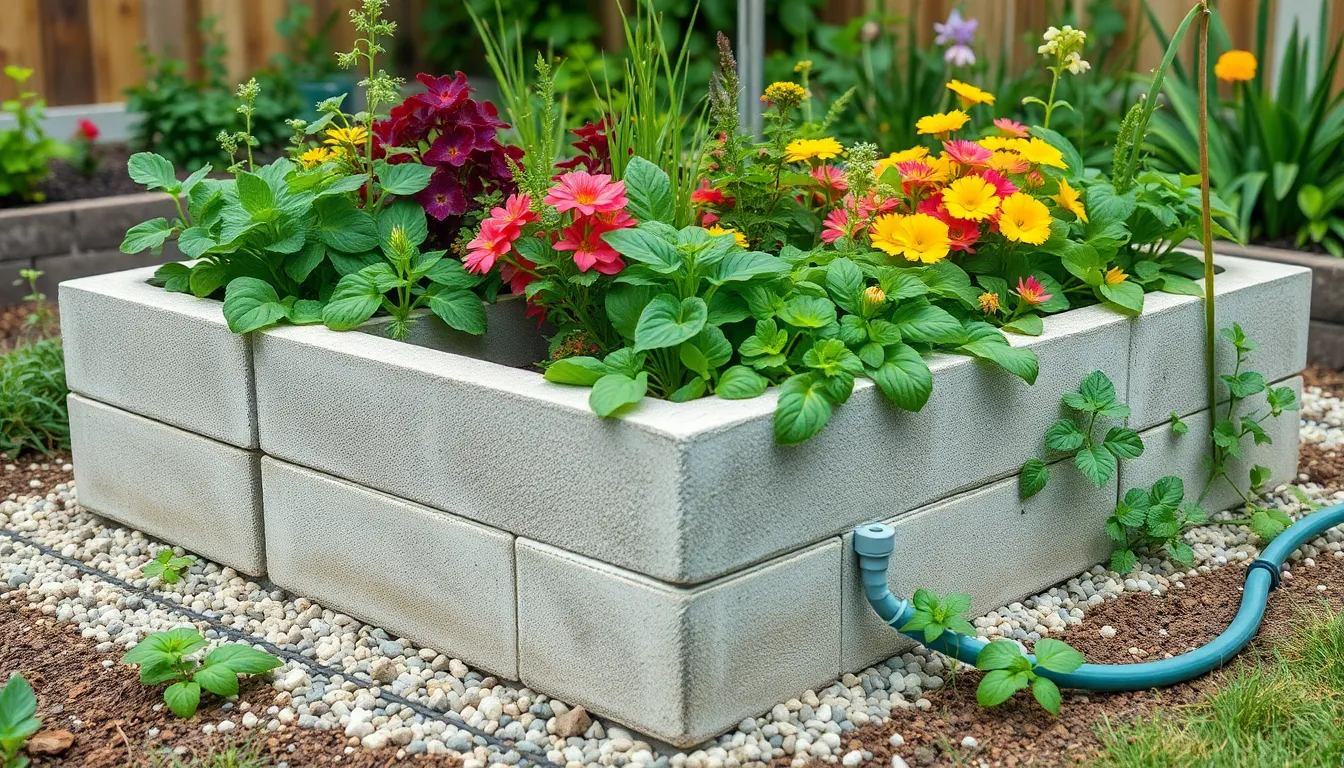
Proper drainage and soil composition are essential for successful cinder block gardening. We’ll explore the best practices that ensure your plants thrive while maximizing the natural benefits of cinder block construction.
Proper Base Preparation Methods
Ground leveling forms the foundation of any stable cinder block garden structure. We start by clearing the designated area of grass, weeds, and debris to create a clean working surface. Checking for level ground prevents uneven settling that can compromise the entire structure over time.
Adding a gravel layer beneath the first course of blocks provides improved drainage and stability. We recommend spreading a 2-3 inch layer of crushed gravel or pea stone across the entire base area. This foundation layer allows excess water to escape quickly while preventing blocks from shifting during freeze-thaw cycles.
Compacting the gravel base ensures long-term structural integrity. We use a hand tamper or plate compactor to firmly settle the stone foundation before placing the first row of cinder blocks.
Soil Mix Recommendations
Topsoil serves as the primary component for healthy plant growth in cinder block gardens. We blend high-quality topsoil with organic amendments to create the ideal growing medium. A balanced mixture typically consists of 50% topsoil, 30% compost, and 20% perlite for optimal results.
Compost adds essential nutrients while improving soil structure and water retention. We incorporate well-aged compost from kitchen scraps, yard waste, or purchased organic matter to boost soil fertility naturally. This organic component feeds beneficial microorganisms that support root development.
Perlite enhances drainage and aeration throughout the soil mixture. We add this lightweight volcanic glass to prevent compaction and ensure proper root oxygenation. The hollow structure of cinder blocks works synergistically with perlite to create superior drainage conditions compared to traditional garden beds.
Watering System Integration
Drip irrigation systems conserve water while delivering moisture directly to plant roots. We install drip lines along the base of each cinder block level to ensure consistent watering without waste. These systems reduce water usage by up to 50% compared to overhead sprinklers while preventing leaf diseases.
Rainwater collection becomes more efficient when integrated with cinder block structures. We design garden layouts that naturally channel runoff into designated collection areas or rain barrels. The raised nature of cinder block beds allows gravity-fed irrigation systems that reduce dependence on municipal water supplies.
Timer-controlled watering ensures plants receive consistent moisture even during busy schedules. We recommend programmable controllers that adjust watering frequency based on seasonal needs and plant requirements.
Budget-Friendly Cinder Block Garden Projects
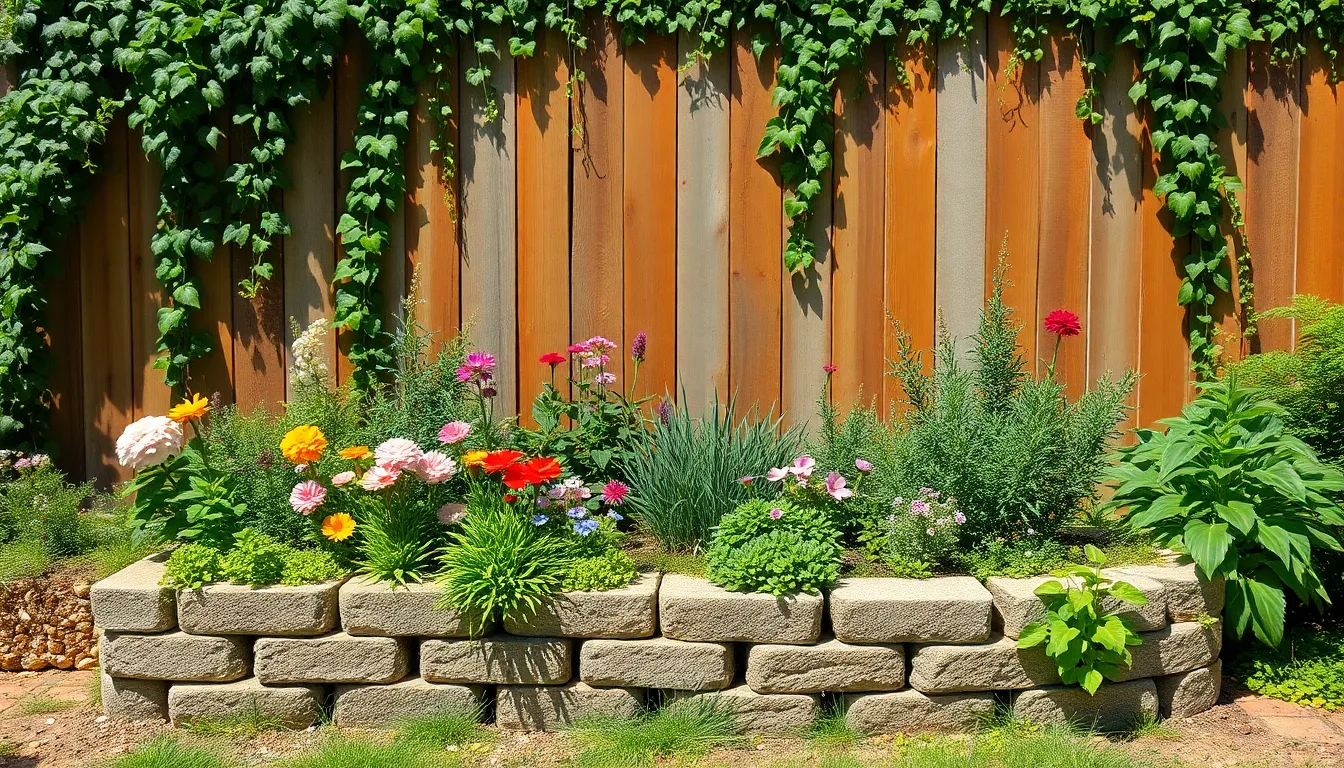
Creating stunning garden features doesn’t require expensive materials or professional installation. We’ve discovered that cinder blocks offer exceptional value for gardeners seeking affordable answers.
DIY Construction Techniques
Stacking and filling forms the foundation of most cinder block garden projects. We stack blocks to create raised beds and planters, then fill the hollow centers with nutrient-rich soil for planting herbs and flowers. Simple block placement requires no mortar or special tools, making this technique accessible to beginners.
Vertical garden construction transforms unused wall space into productive growing areas. We stack cinder blocks against existing fences or walls, creating perfect pockets for trailing plants like ivy and strawberries. This method works exceptionally well in small spaces where ground area is limited.
Retaining wall building prevents soil erosion while creating attractive tiered planting zones. We construct these walls by carefully stacking blocks in stepped formations, allowing us to work with sloped terrain effectively. The weight of the blocks provides natural stability without requiring complex engineering.
Garden bench assembly combines functionality with aesthetics through strategic block placement. We create seating by stacking blocks and topping them with wooden planks, then customize the appearance with outdoor paint or stain.
Cost-Saving Material Alternatives
| Material Type | Cost Range | Durability | Best Use |
|---|---|---|---|
| Cinder Blocks | $1-3 each | 20+ years | All projects |
| Concrete Blocks | $2-4 each | 25+ years | Heavy-duty walls |
| Wooden Planks | $5-15 each | 5-10 years | Natural look beds |
Concrete blocks serve as premium alternatives to standard cinder blocks when extra durability matters. We choose these denser options for projects requiring superior strength and longevity, though they cost slightly more per unit.
Wooden planks create natural-looking raised beds and planters at competitive prices. We select pressure-treated lumber for outdoor projects, achieving rustic aesthetics that complement cottage-style gardens perfectly.
Salvaged materials reduce project costs dramatically when sourced from construction sites or demolition projects. We inspect reclaimed blocks carefully for cracks or damage before incorporating them into our garden designs.
Repurposing Existing Blocks
Reclaimed block utilization transforms waste materials into beautiful garden features. We source old blocks from previous construction projects or building renovations, giving them new life in creative industry applications. This approach reduces both waste and material costs significantly.
Decorative enhancement updates weathered blocks through strategic painting and artistic treatments. We apply outdoor primer and vibrant colors to create eye-catching planters that match our garden’s color scheme. Stenciling patterns or adding mosaic tiles personalizes each piece further.
Structural repurposing converts blocks from their original construction use into functional garden elements. We break down old retaining walls to create individual planters, or relocate pathway borders to new locations as our garden layout evolves.
Creative transformation turns damaged or incomplete blocks into unique garden art pieces. We fill cracks with colorful grout to create decorative patterns, or stack broken pieces to form interesting sculptural elements that add character to our outdoor spaces.
Maintenance and Care for Cinder Block Gardens
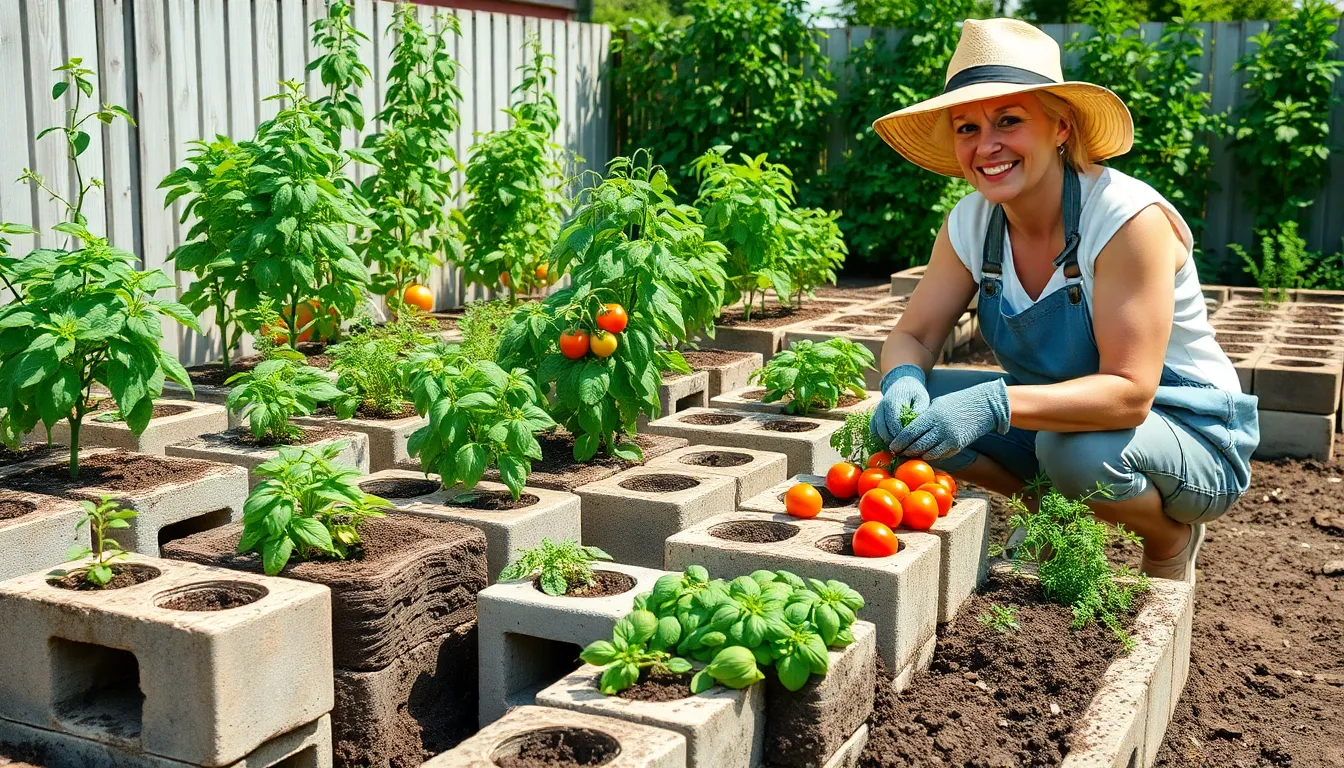
Successful cinder block gardens require consistent attention to ensure optimal plant health and structural integrity. We’ll guide you through essential maintenance practices that keep your garden thriving year round.
Seasonal Upkeep Requirements
Spring preparation involves inspecting our cinder block structure for any movement that occurred during winter freeze thaw cycles. We should check block alignment and stability before amending soil with fresh compost or aged manure. Testing soil pH helps us determine if adjustments are needed for optimal plant growth. Planting schedules begin once soil temperatures stabilize and frost danger passes.
Summer maintenance focuses on increased watering frequency during heat waves and extended dry periods. We monitor plants closely for pest infestations that thrive in warm weather conditions. Mulch replenishment becomes crucial to retain soil moisture and suppress aggressive weed growth. Regular harvesting of vegetables and deadheading of flowers promotes continued production throughout the growing season.
Fall cleanup starts with removing spent annual plants and adding their healthy remains to compost piles. We incorporate fresh organic matter into existing soil to prepare beds for winter dormancy. Cover crop planting or mulch application protects soil structure from erosion and nutrient loss. Tender perennials require winterizing measures such as protective covering or relocation to sheltered areas.
Winter protection involves clearing accumulated snow from block surfaces to prevent moisture damage and structural stress. We should inspect drainage systems to ensure proper water flow away from garden foundations. Frost protection for remaining plants includes row covers or cold frames constructed using existing cinder block infrastructure.
Block Cleaning and Preservation
Regular cleaning maintains both appearance and functionality of our cinder block gardens throughout active growing seasons. We use mild soap answers and scrub brushes to remove soil stains, algae buildup, and mineral deposits from block surfaces. Thorough rinsing prevents soap residue from affecting plant health or soil chemistry. Power washing works effectively for stubborn stains but requires careful pressure settings to avoid block damage.
Structural inspection should occur twice yearly to identify cracks, chips, or deterioration that could compromise garden stability. We examine mortar joints if blocks are permanently installed and check for settling or shifting of stacked configurations. Early detection of structural issues prevents costly repairs and potential plant loss from collapsed garden sections.
Preservation techniques extend the lifespan of cinder blocks exposed to weather extremes and constant moisture contact. We apply concrete sealers to porous surfaces that show signs of excessive water absorption or freeze damage. Replacing severely damaged blocks maintains structural integrity and prevents progressive deterioration of surrounding elements.
Plant Rotation Strategies
Annual crop rotation prevents soil nutrient depletion and reduces pest and disease pressure in our cinder block garden beds. We follow botanical family groupings when planning rotations, avoiding planting tomatoes, peppers, and eggplants in the same location consecutive years. Legumes such as beans and peas naturally fix nitrogen, making them excellent predecessors for heavy feeding crops like corn and leafy greens.
Seasonal planning maximizes productivity by alternating cool season and warm season crops within the same growing spaces. We plant lettuce, spinach, and radishes in early spring, followed by tomatoes, peppers, and squash after soil warms sufficiently. Fall planting of cold hardy vegetables like kale, carrots, and Brussels sprouts extends harvest seasons well into winter months.
Companion planting utilizes cinder block dividers to create distinct zones for beneficial plant partnerships within larger garden configurations. We pair basil with tomatoes, marigolds with vegetables prone to pest damage, and nasturtiums with cucumbers for natural pest deterrence. Strategic placement of aromatic herbs throughout vegetable sections provides ongoing protection while maximizing space efficiency in structured cinder block layouts.
Conclusion
We’ve explored the incredible versatility of cinder blocks in garden design and discovered just how groundbreaking these simple building materials can be. From raised beds to vertical gardens and everything in between these affordable blocks offer endless possibilities for creating functional and beautiful outdoor spaces.
What makes cinder block gardening truly special is its accessibility – anyone can start with a basic project and gradually expand their garden as skills and confidence grow. The durability and low maintenance requirements make these structures perfect investments for long-term gardening success.
Whether you’re working with a tiny balcony or a spacious backyard cinder blocks provide the foundation for gardens that are both practical and visually appealing. Start small experiment with different configurations and watch as your outdoor space transforms into a productive and stunning garden oasis.
Frequently Asked Questions
What are cinder blocks and why are they good for gardening?
Cinder blocks are rectangular concrete masonry units with hollow cores. They’re excellent for gardening because they’re affordable, durable, and versatile. Their hollow design allows for creative planting configurations, while their thermal mass helps regulate soil temperature. They don’t require advanced skills to use and can transform any outdoor space into a productive garden area.
How much does it cost to start a cinder block garden?
Cinder block gardening is budget-friendly, with blocks typically costing $1-3 each. A basic raised bed using 12-16 blocks costs around $20-50. You can reduce costs further by using salvaged blocks, concrete alternatives, or repurposing damaged blocks. The main expenses are blocks, soil, and plants, making it accessible for most budgets.
Can I use cinder blocks on a balcony or small patio?
Yes! Cinder blocks are perfect for small spaces. You can create vertical gardens, corner planters, and mobile configurations that maximize limited areas. For balconies, focus on weight distribution and use lighter soil mixes. Mobile block systems work well for renters, allowing you to rearrange or relocate your garden as needed.
What type of soil should I use in cinder block gardens?
Use a well-draining soil mix combining equal parts topsoil, compost, and perlite or coarse sand. This mixture provides proper nutrition, aeration, and drainage. Avoid heavy clay soils that retain too much moisture. The soil should be loose enough for roots to penetrate easily while retaining adequate moisture for plant growth.
Do cinder block gardens need special drainage?
Yes, proper drainage is crucial. Start with a level base and add a gravel layer beneath blocks for stability and drainage. The hollow cores of cinder blocks naturally improve drainage, but ensure water can escape from the bottom. Consider installing drip irrigation systems for consistent watering without oversaturating the soil.
What plants grow best in cinder block gardens?
Herbs, vegetables, and flowers all thrive in cinder block gardens. Herbs like basil, rosemary, and thyme work exceptionally well. Vegetables such as tomatoes, peppers, and lettuce flourish in raised configurations. For decorative purposes, consider marigolds, petunias, and succulents. Choose plants based on your space, sunlight, and climate conditions.
How do I maintain my cinder block garden?
Maintain your garden through seasonal care: spring preparation and planting, summer watering and pest monitoring, fall cleanup and harvesting, and winter protection. Clean blocks regularly to prevent algae buildup, inspect for structural issues, and rotate plants annually to maintain soil health. Consistent watering and occasional fertilizing keep plants thriving.
Can I move cinder block gardens once they’re built?
Some configurations are movable, especially single-block planters and small modular systems. However, large raised beds become permanent once filled with soil due to weight. Plan your layout carefully before construction. For flexibility, consider building smaller, portable sections that can be rearranged seasonally or relocated if you move homes.
